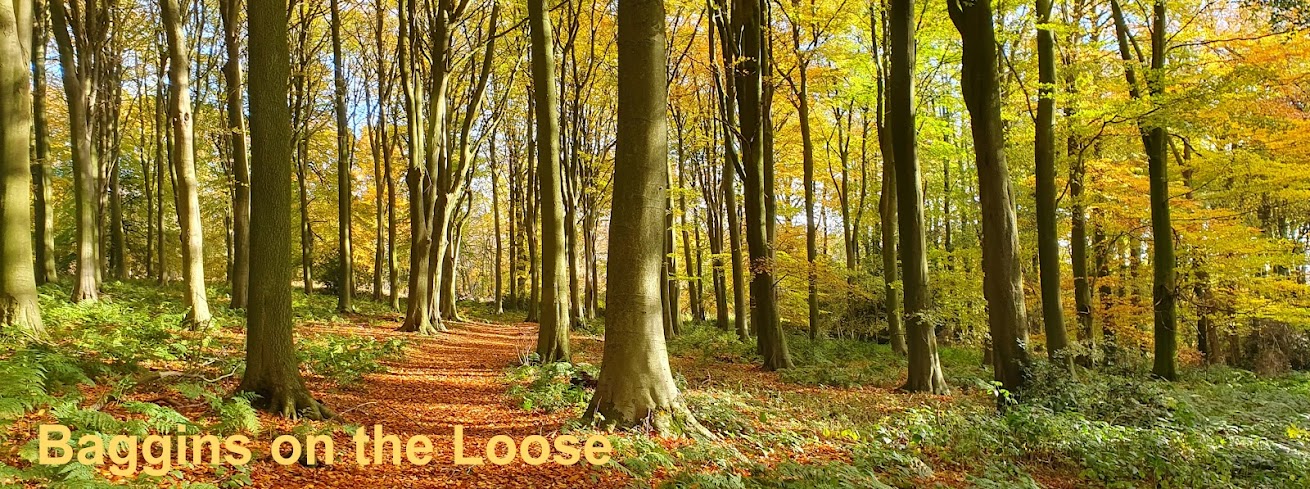There are some sad people in the world ... spotting something different in a bush on the caravan park I walked towards and lifted the bins only to be greeted by a gruff 'Oy, you shouldn't be on 'ere, f***ing birdwatchers' - occupational hazzard for me but I bet this geezer (who looked about as static and square as his caravan) was just waiting for someone to step onto his precious piece of trailer park grass!
 |
| Ring Ouzel (courtesy of Wikepedia) |
Sadly that was about as good as it got as a wet mist settled over the point which quickly turned to a steady drizzle and made birding all but impossible. I sat in the car for a while trying to get some decent shots of Fieldfares and Redwings but then the battery pack on the camera died so it was time to call it a day.
 |
| Flamborough Headland |
Much better day, it always is when the sun is shining! I saw just about everything that was at Spurn and more plus it was dry and at times even warm.
 Again hundreds of winter thrushes flying in off the sea and populating the many fields and hedges on the headland which in itself has got so much better as a birding location since I was last there - there's something of a rivalry between Flamborough and Spurn for who can get the best birds (its a man thing) and I suspect some conservation minded twitchers here have been reading their 'how to make your hedgrows look good and attract rare birds manual'. Seems to have worked - thanks to a couple of local birders I was on to a Dusky Warbler within an hour of being there, not much to look at and the briefest of views but a true vagrant to these shores. They're an Asian warbler but somehow a few turn up on the east coast nearly every year.
Again hundreds of winter thrushes flying in off the sea and populating the many fields and hedges on the headland which in itself has got so much better as a birding location since I was last there - there's something of a rivalry between Flamborough and Spurn for who can get the best birds (its a man thing) and I suspect some conservation minded twitchers here have been reading their 'how to make your hedgrows look good and attract rare birds manual'. Seems to have worked - thanks to a couple of local birders I was on to a Dusky Warbler within an hour of being there, not much to look at and the briefest of views but a true vagrant to these shores. They're an Asian warbler but somehow a few turn up on the east coast nearly every year.Just like at Spurn there were small birds everywhere, in the hedges and bushes and overhead, blown in by the wind. Some on course for winter in the UK, like most of the winter thrushes and some blown off course like the aforementioned warbler. I watched one small bird coming in off the sea and into a bush and it turned out to be a female Redstart, little wonder the twitchers are out in force this time of the year!
 I had at least 7 Ring Ouzels on the headland but annoyingly none hung around long enough for me to photograph. A flock of 7 Twite on flitting around the cliff were equally evasive and so was a single Black Redstart. This Brambling was a bit more confiding though, one of about 25 on the headland and I also got some good shots of Goldcrests - they were everywhere. The UK's smallest bird, our breeding population is swelled every year by thousands of wintering visitors from northern europe. I got a fair few pics of these tiny birds and I've selected a couple with a migration feel. Normally you'll see Goldcrests in coniferous woods but after been blown in across the sea you can see them anywhere - the first one was feeding up on grain in a stubble field and the second was on the steps of the lighthouse!
I had at least 7 Ring Ouzels on the headland but annoyingly none hung around long enough for me to photograph. A flock of 7 Twite on flitting around the cliff were equally evasive and so was a single Black Redstart. This Brambling was a bit more confiding though, one of about 25 on the headland and I also got some good shots of Goldcrests - they were everywhere. The UK's smallest bird, our breeding population is swelled every year by thousands of wintering visitors from northern europe. I got a fair few pics of these tiny birds and I've selected a couple with a migration feel. Normally you'll see Goldcrests in coniferous woods but after been blown in across the sea you can see them anywhere - the first one was feeding up on grain in a stubble field and the second was on the steps of the lighthouse!In amongst what was probably something like 500 Goldcrests on the headland there were maybe 20 or so Chiff Chaffs and although slightly marred by the wire fencing, this was more than a useful shot of one (pic left)
It was a bright and breezy day and sea watching was tricky in the gusty winds but there was a bit happening out there with plenty of Gannets and Kittiwakes passing offshore, maybe 200 or so Common Scoter and the most photogenic were these Eider (7 males to 1 female but notice she's the one on top!), one of many passing flocks of these trult sea going ducks.
..... and I'll finish on this Grey Seal that seemed to keeping a close eye on me whilst I was photographing the Eider Ducks, he seemed to begging me to take his picture!






No comments:
Post a Comment